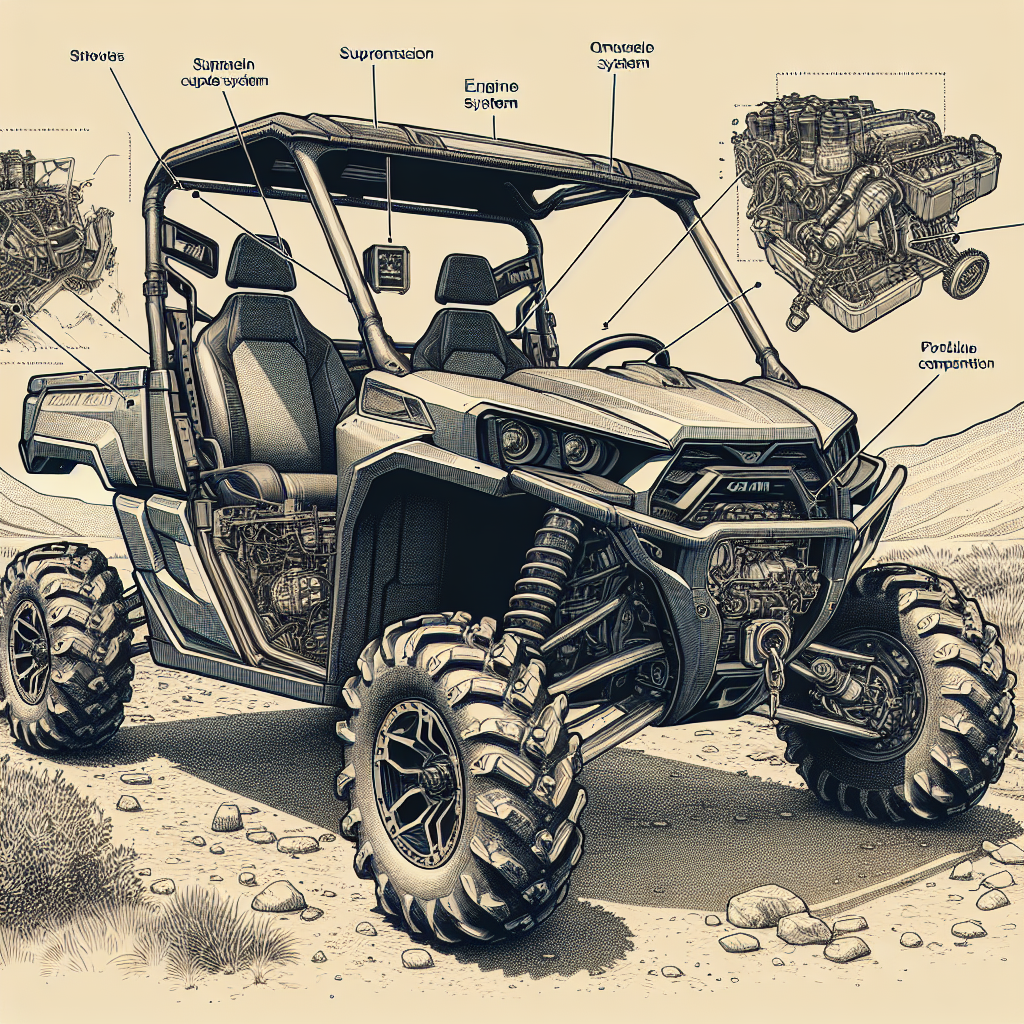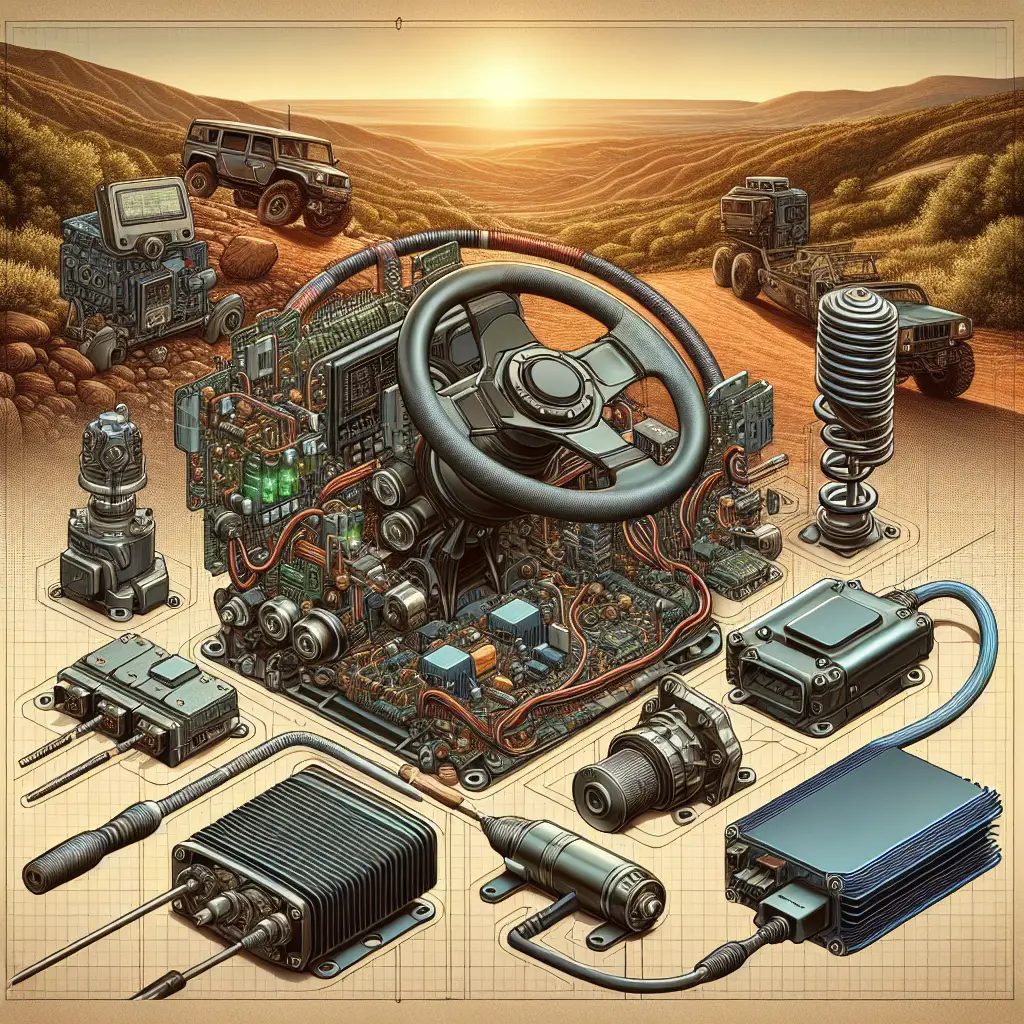Kawasaki Mule vehicles are renowned for their durability and performance, especially on farms and rugged terrains. However, like any mechanical machine, they are not immune to problems. One of the most common issues that Kawasaki Mule owners may face is with the starter system. The symptoms of a faulty starter are often straightforward, with reports of clicking sounds without the engine turning over, which can be caused by a range of underlying issues.
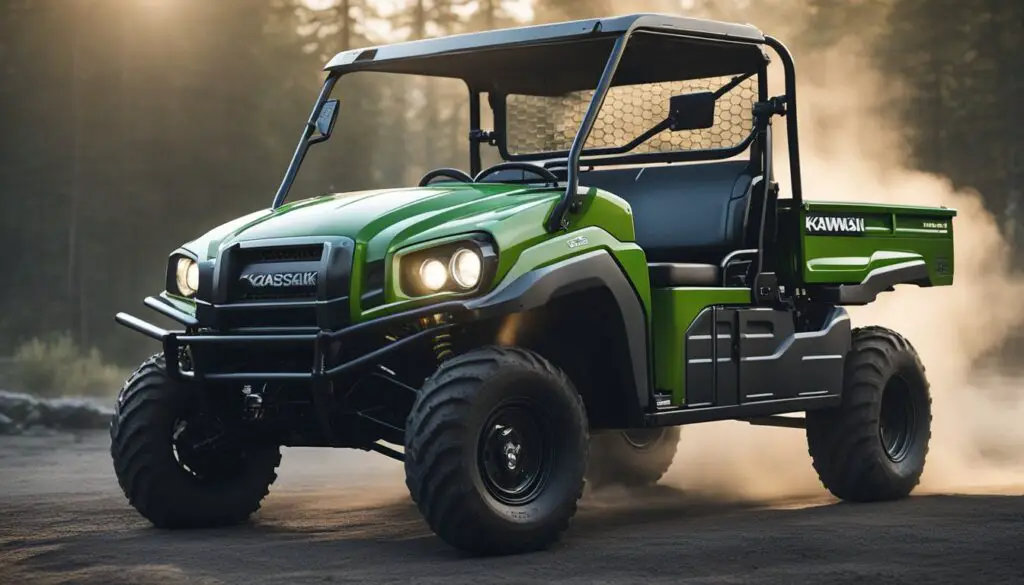
Troubleshooting the starter system to pinpoint the cause of the problem is a crucial step towards a solution. A robust understanding of how the starter system works, including the role of the solenoid and electrical components, is vital. Maintenance is also key in preventing starter problems, and knowing the right maintenance tips can extend the longevity of the starter. When a starter problem occurs, you might need to test electrical components, inspect mechanical parts, or possibly replace the starter. Each solution requires a different approach and varying levels of mechanical knowledge, but with the right guidance, you can address these issues effectively.
Key Takeaways
- Kawasaki Mule starter problems are common and usually indicated by a clicking sound.
- Correct diagnostics and maintenance are essential for resolving and preventing starter issues.
- You may need to troubleshoot, perform repairs, or replace parts to fix the starter system.
Understanding Kawasaki Mule Starter Systems
When you turn the key on your Kawasaki Mule, a well-functioning starter system should set the engine in motion. Your vehicle’s ability to start reliably hinges on the efficiency and integrity of this system.
Components of the Starter System
- Battery: Supplies electric power.
- Starter Motor: Turns the engine over.
- Solenoid: Acts as a relay, sending battery power to the starter motor.
- Ignition Switch: Initiates the starting process.
Your Kawasaki Mule’s starter system begins with the battery, providing the essential power needed to start the engine. The ignition switch is your point of command, which when turned, signals the solenoid to engage. This action allows the current from the battery to reach the starter motor, which in turn cranks the engine.
Role of the Starter Motor in Engine Ignition
The starter motor is the heart of the starting process. When you engage the ignition:
- Electrical current is sent to the starter motor.
- The motor turns the engine over, beginning the ignition process.
A healthy starter motor is pivotal for initiating your Kawasaki Mule’s engine ignition. It’s a small electric motor powered by the battery. Once activated, it spins the engine fast enough to begin the combustion process, breathing life into your Mule. If the starter motor wears out, it may cause resistance, making the engine difficult to start. Being familiar with this system not only aids in troubleshooting but also ensures you understand the importance of regular maintenance.
Common Kawasaki Mule Starter Problems and Diagnostics
When your Kawasaki Mule won’t start, it’s vital to assess whether the starter system is the culprit. Here you’ll learn how to spot common starter issues and how to undertake proper diagnostics to resolve them efficiently.
Identifying Starter Problems
Your Kawasaki Mule’s refusal to start could be due to a starter system failure, often characterized by distinctive signs. Listen for a clicking noise when attempting to start; this can indicate a starter relay or solenoid malfunction. Absence of sound might signal a more significant issue, possible with the ignition switch or a dead battery.
- Clicking Sound: Likely a starter relay/solenoid issue.
- No Sound at All: Could be a dead battery, faulty ignition switch, or broken starter motor.
If you find that your engine cranks but doesn’t start, this could point to problems outside the starter system, such as in the fuel or ignition system.
Diagnostic Tools and Methods
To accurately diagnose your Mule’s starting problems, having the right tools is essential. A multimeter is your go-to instrument to measure voltage across battery and starter terminals.
- Battery Voltage Check:
- Set your multimeter to measure voltage.
- Connect the probes to the battery terminals.
- A reading below 12 volts typically indicates a low charge or a bad battery.
- Starter Relay Test:
- Locate the starter relay.
- Use the multimeter to check for continuity.
- No continuity suggests a faulty relay needing replacement.
For precise steps and safety, always refer to your Kawasaki Mule’s service manual. Proper diagnostics will save you time and ensure that the right fixes are made to get your Mule running smoothly again.
Troubleshooting Electrical Components
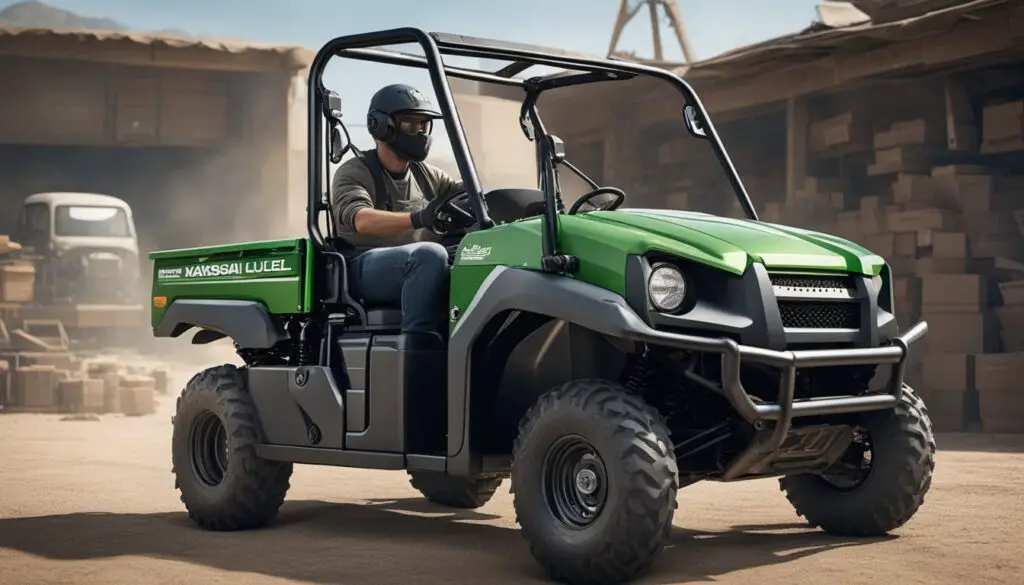
When tackling issues with your Kawasaki Mule’s starting system, you’ll want to methodically inspect the electrical components that contribute to the starting process. This ensures that you pinpoint the exact origin of the problem without unnecessary replacements or repairs.
Battery Inspection
Firstly, examine your battery to make sure it’s in good condition. Check the voltage with a multimeter — you’re looking for at least 12.6 volts for a fully charged state. If it’s reading low, consider charging the battery or replacing it with a new battery if it fails to hold a charge.
- Voltage Reading:
- Fully Charged: 12.6+ volts
- Needs Charge: Less than 12.6 volts
- Replace: Consistently under 12 volts after charging
Also, examine the terminals for any signs of corrosion or loose connections, as this could interrupt the flow of electricity.
Solenoid and Relay Examination
Next, move on to the solenoid and relay. These act as a bridge between your battery and starter. When you turn the ignition switch, they should click as they activate. No click may indicate a malfunction. You can perform a bypass test by bridging the main terminals with an insulated screwdriver. If the starter turns, your solenoid might need replacing.
- Symptoms of a Faulty Solenoid:
- No clicking sound when the ignition is turned
- The starter turns when bypassing the solenoid
Wiring and Connection Checks
Lastly, scrutinize the wiring and connections throughout the starting circuit. Look for any obvious damage, such as frayed wires or loose connectors. Pay special attention to the trigger wire leading to the solenoid, as it’s often a culprit in starting issues. All connections should be secure and free of corrosion.
- What to Look For:
- Frayed or damaged wires
- Loose or corroded connectors
- Secure trigger wire connection at the solenoid
By following these steps, you should be able to diagnose and potentially remedy issues within the electrical starting system of your Kawasaki Mule.
Mechanical Starter Failures

When dealing with starter issues on your Kawasaki Mule, understanding the mechanical components is crucial. The starter system depends on precise interactions between the Bendix gear, flywheel, and the starter motor with its clutch. Let’s break these down further.
Bendix Gear and Flywheel Engagement
The Bendix gear is a crucial component in getting your Kawasaki Mule’s engine to start. It engages the flywheel to turn the engine over. A common failure is when the Bendix gear fails to engage with the flywheel properly. This could be due to:
- Worn gear teeth: These can prevent a smooth engagement and need to be checked for signs of damage.
- Inadequate lubrication: Ensure that there’s sufficient lubrication where the Bendix gear meets the flywheel.
- Misalignment: If the gear and flywheel are not aligning correctly, engagement will be inconsistent or non-existent.
When you turn the key and hear a grinding noise, it typically indicates an issue with the Bendix or the flywheel. Regular inspection of these parts can prevent failures before they happen.
Starter Motor and Clutch Issues
The starter motor uses electrical power to turn your Mule’s engine over, and the clutch assembly ensures that this process is smooth. Problems you might face include:
- Burnt-out motor: You might notice that the motor seems unresponsive or turns over very slowly.
- Faulty clutch assembly: If the motor runs but doesn’t engage the engine, the clutch could be the culprit.
To maintain these parts:
- Check for signs of wear or damage on the starter motor.
- Ensure that the clutch assembly is functioning properly and is not sticking or seized.
Regular maintenance and timely repairs to these components will keep your Mule starting reliably.
Maintenance Tips for Starter Longevity
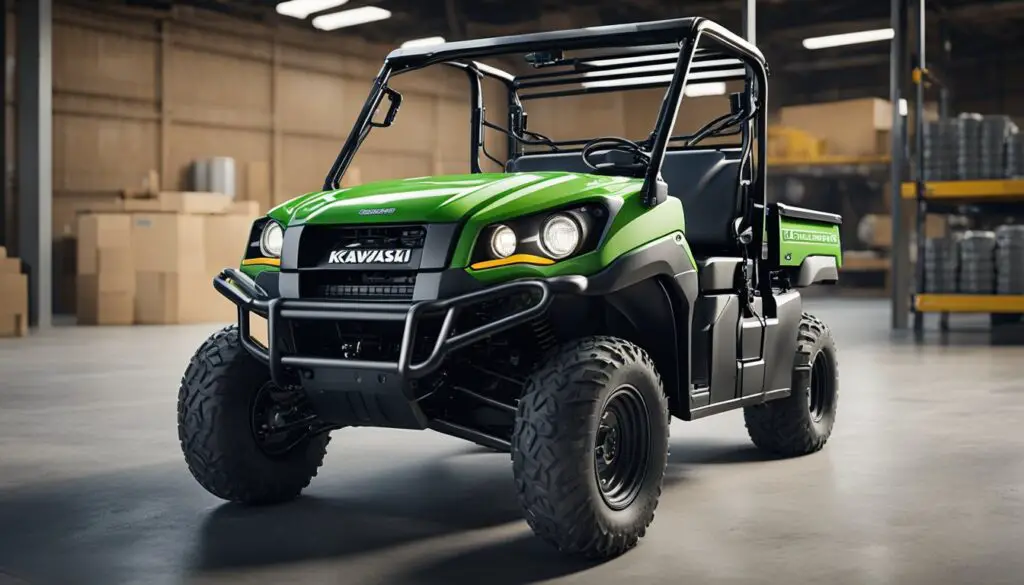
To ensure your Kawasaki Mule’s starter operates reliably, regular maintenance and preventative measures are crucial. Neglect can lead to starter failure, leaving you with a vehicle that won’t start when you need it most. Here’s how to keep your starter system in top condition.
Regular Servicing of the Starter System
It’s essential to check and service your starter system periodically. Here’s a simple checklist:
- Consult the Service Manual: Your Kawasaki Mule’s service manual is your go-to guide. It provides specific intervals and procedures for servicing your UTV’s starter system.
- Professional Inspection: Schedule appointments with your dealer to check the starter and electrical connections. They can spot signs of wear or damage early.
Preventative Measures to Avoid Starter Problems
Taking these steps will help prevent most starter-related issues:
- Avoid Moisture and Dirt: Keep your UTV clean, and dry the starter area after washing to prevent rust and corrosion.
- Battery Maintenance: Ensure your battery is charged and in good condition; a weak battery can lead to starter problems.
- Corrosion Checks: Regularly inspect cables for signs of corrosion. If you spot any, clean them with a wire brush or replace them if they’re severely corroded.
Replacement Parts and Repair Options
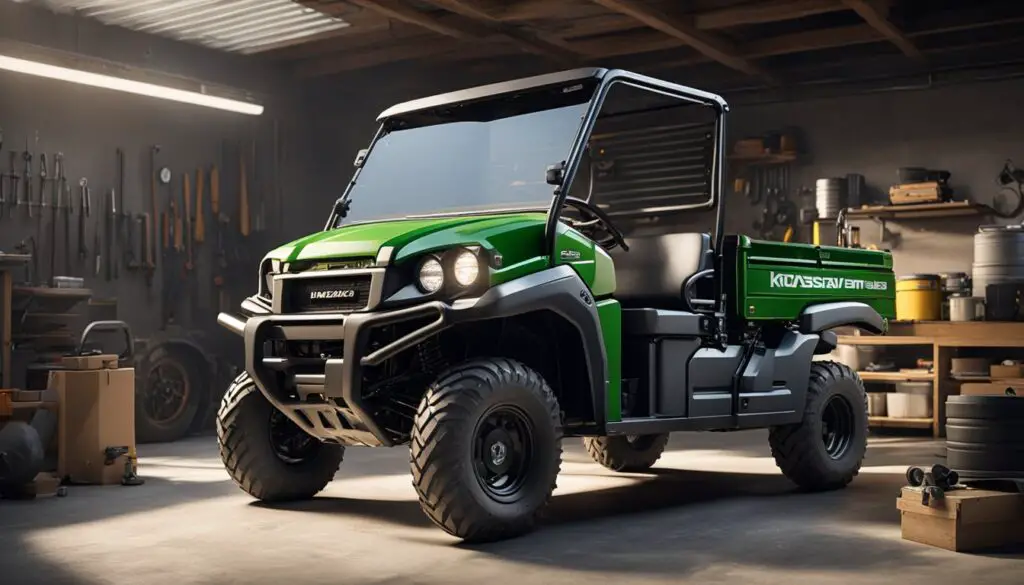
When dealing with starter issues on your Kawasaki Mule, it’s crucial to understand when to opt for new parts and where to find the reliable service for repair.
When to Consider a New Starter or Solenoid
Your Kawasaki Mule might need a new starter if you experience consistent difficulties with the engine cranking, especially if the starter motor runs without engaging the engine. Similarly, a new solenoid may be necessary if the starter motor spins but doesn’t engage. If your starter relay is the culprit, it often requires replacement since it’s responsible for passing current to the starter motor.
Finding the Right Parts and Service
To ensure you purchase the correct replacement parts, like a solenoid or a relay, confirm the specific model of your Kawasaki Mule. You can find these parts at a:
- Authorized Kawasaki dealer: They provide parts that are specifically designed for your Mule model.
- Reputable online store: Ensure they list compatibility with your Mule’s model year before purchasing.
For installation, if you’re not comfortable undertaking the task yourself, a qualified service provider should be sought. They will have the expertise necessary to install your new parts correctly, minimizing the risk of further issues.
Step-by-step Starter Replacement Guide
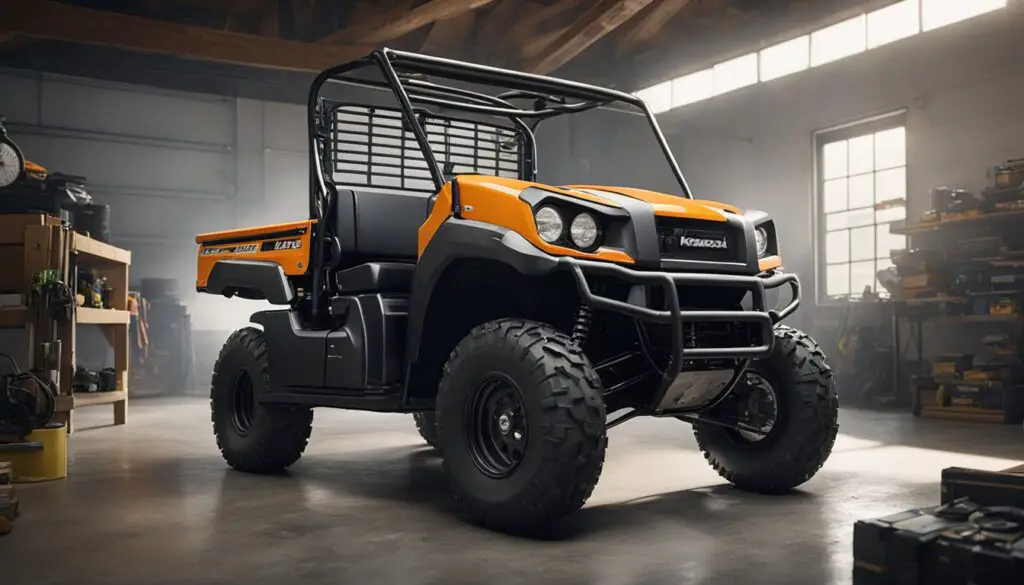
Replacing the starter on your Kawasaki Mule is a task you can accomplish with some basic tools and safety measures in place. This guide will walk you through the process efficiently.
Tools and Safety Precautions
Tools You’ll Need:
- A set of sockets and a ratchet
- Screwdrivers
- Wrench set
- Safety glasses
- Gloves
Safety Precautions:
- Disconnect the negative battery cable to prevent any electrical accidents.
- Refer to the service manual specific to your Kawasaki Mule model for any specific requirements.
- Ensure the vehicle is on a stable surface and that you’re wearing safety glasses and gloves.
Removing the Old Starter
- Locate the starter motor; this can typically be found under the seat or the vehicle’s hood.
- Use your ratchet and the appropriate socket to remove the bolts that secure the starter to the engine block.
- Carefully disconnect the starter wiring. Pay close attention to how these are connected, so you can easily reconnect them to the new starter.
- Once all connections are free, you can remove the starter from your Mule.
Installing a New Starter
- Compare the new starter with the old one to ensure they are identical.
- Position the new starter into place where the old one was located.
- Reconnect the starter wiring, making sure the connections are secure and match the configuration of the old starter.
- Secure the new starter in place with the bolts you removed earlier, again using your ratchet and socket.
- Finally, reconnect the negative battery cable.
- Test the new starter by starting your Kawasaki Mule. It should engage smoothly if everything is connected correctly.
Final System Checks and Post-Repair Testing
After addressing issues with your Kawasaki Mule’s starter, it’s crucial to perform final system checks and post-repair testing. This ensures everything is assembled correctly and that the repair effectively restored proper function.
Ensuring Proper Assembly
Before jumping into function testing, visually inspect your work. Check that all connections, particularly the ground cable, are secure and corrosion-free. Ensure the battery terminals have a clean and firm connection, as this can affect the engine’s ability to start.
Conducting a Post-Repair Function Test
Now, let’s test out the starter and confirm the engine initiates correctly. You’ll want to:
- Turn the key to the ignition, and listen for a smooth starter engagement. There shouldn’t be any grinding or sticking.
- Observe if the engine cranks and starts promptly. If it doesn’t, this could indicate issues with voltage or compression requiring further diagnosis.
- Use a multimeter on DC voltage setting to check system charge, expecting a reading between 13.5 and 14.5 volts while the engine is running. If the voltage falls outside this range, further investigation into the charging system may be necessary.
Experiencing consistent cranking and the engine running indicates a successful repair. If issues persist, re-check all steps to ensure each component is functioning as intended.
Frequently Asked Questions
Navigating through starting issues with your Kawasaki Mule can often be straightforward if you know where to begin. Here are some common questions and easy-to-follow answers that might help resolve your UTV’s reluctance to start.
Why does my Kawasaki Mule just click when I try to start it?
A clicking sound typically indicates an issue with the battery or a poor connection. Ensure your battery is fully charged and inspect the cables for any signs of corrosion or loose connections.
What are common troubleshooting steps for starting issues in a Kawasaki Mule?
Begin by checking your battery charge and connections. Following that, inspect the starter motor, ignition switch, and fuel system for signs of wear or damage. It’s crucial to diagnose whether the problem lies in electrical components or fuel delivery.
How can I locate the starter relay on a Kawasaki Mule?
The starter relay is generally mounted near the battery or under the seat. Look for a small box which is usually secured with mounting bolts. Consult your vehicle’s manual for the exact location.
What are typical signs of a bad starter in a Kawasaki Mule?
Symptoms of a failing starter include a grinding noise on starting, a starter that engages but doesn’t turn over the motor, or simply getting no response when the ignition is turned.
How can I resolve starting problems in my 2018 Kawasaki Mule?
For a 2018 model, starting troubles may involve checking the state of the electric fuel pump, spark plug integrity, and ensuring the DFI (Digital Fuel Injection) system isn’t displaying fault codes. Keep an eye on the dashboard for warning lights.
What maintenance tips can prevent starting issues in a 2017 Kawasaki Mule?
Regular maintenance such as keeping the battery terminals clean, periodically checking electrical wiring, and ensuring the fuel system is free of blockages will help avoid starting issues. Replace spark plugs as recommended in your service schedule.

